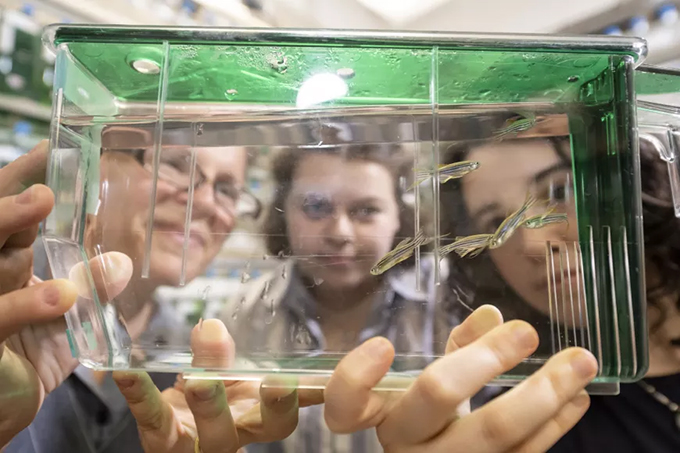
Imagine for a moment that it was not possible to read books. That we were only aware of them through the stories and reviews that came to us through other people.
Imagine that we could only watch a football game through television. That a stadium could not be accessed to watch a match live. Even more so, that there was no possibility of playing it at school, in a municipal facility, even in an improvised rectangle in a vacant lot!
Under these circumstances, how many people would like the reading? Would there be the same number of unconditional fans of the so-called king sport in the world ?
Bring science closer or closer to it?
In academic and specialized circles it is already commonplace to talk about the importance of bringing science closer to society. To bring scientific knowledge to citizens. To make known the work of scientific research. And to help him understand the importance of science.
This is a unidirectional approach, in which people are considered passive receivers of science. But there is the option of bringing society closer to science, thus composing a two-way relationship model.
This is the model adopted by the project Scientists in Practices . This is an initiative promoted by a research institution and a citizen association: the Higher Council for Scientific Research (CSIC) and the Spanish Association for the Advancement of Science (AEAC) .
Open research to young people
In this project, several scientific institutions have come together to open the doors of their laboratories to students in the 3rd year of ESO (Compulsory Secondary Education) and 2nd year of PMAR (Program for Improving Learning and Performance).
The project provides them with the opportunity to stay in research groups and laboratories, participating in their work and living with their components.
The objective is to stimulate talent in underprivileged areas and awaken or revive the interest of these young people in science.
For five days, thirty-eight students have become scientists and scientists. They have collaborated in the daily work of nineteen research groups and have followed a training program and activities specifically designed by each of these groups.
Mutual benefit and social responsibility
Carrying out these stays offers opportunities and benefits both to students and to educational centers and to research institutions and groups.
With this experience, students are provided with the opportunity to come into contact with a different and enriching social environment. Their social integration is favored through science. And it contributes to the early promotion of their talent and their scientific vocations.
Stays in research groups offer young people the chance to get started in the world of scientific research and improve their knowledge of it.
They allow them to discover first-hand the possibilities for developing future research or technical careers. Awaken, encourage and guide their scientific vocations. Improve your knowledge about possible options in the choice of further studies. Develop attitudes and behaviors necessary for the future performance of their working life. And improve your communication skills.
For their part, teaching centers (public secondary schools) can offer their students a complementary activity to their teaching programme, which contributes to their training and enriches their educational, employment and personal prospects. Científic@s en Internships helps them present science and research to their students as an option for their future studies and professional activity.
Likewise, it allows them to establish relationships with research groups and centers, which can translate into new opportunities for collaboration.
Participation in Scientists in Practices provides research institutions with opportunities to establish and strengthen relationships with educational centers. To project your corporate image or identity. And to increase its visibility and that of science in general, in society.
This activity also contributes to improving the skills and motivation of researchers in the field of communication and scientific dissemination.
It is, in short, an investment in the promotion of science and scientific culture throughout society.
One more member of the team
Students live an immersion in a research environment. They receive the consideration of one more component of the receiving group, in an adult work environment, but without ever losing sight of the educational value of the stays and learning about the world of scientific research.
The activity they carry out is aimed at observing how a research group or laboratory works and participating in its activities. In this way, students consolidate a series of general, transversal knowledge related to scientific activity. And they strengthen their understanding of the importance of teamwork.
The training and activities plan transmits to the students a series of common contents, which are interwoven transversally during the development of the stay and provide them with knowledge about:
- The experimental or scientific method.
- Critical thinking (questioning, experimenting, contrasting).
- The structure and organization of a research group.
- The scientific career in its different modalities and profiles (researcher, technician, etc.).
- The two spheres of utility of science: generation of knowledge and practical utility (social).
At the same time, during their stay, the students work on specific contents that are established in the work plan prepared by each research group. Thus, they have the opportunity to learn and work on simple experimental techniques and to work on specific aspects of the tasks that are carried out in the receiving group.